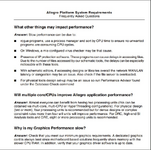nasica88
Newbie

Sorry for my novice question. I am a mere systems engineer for EDA servers.
I am trying to figure out how to reduce EDA software license cost like Cadence or Synopsys. In an effort for that, are the following options viable? If no, can you pls tell me why?
1) Just use the latest, faster processors from Intel or AMD or even alternative processors like ARM or IBM Power.
2) Just use larger servers with more CPU cores or more sockets - we have up to 16-socket servers in the market.
3) Use MPI for parallel processing across multiple server boxes.
Again, thanks for your advices.
** In a follow-up question, how many CPU cores do you usually use for a single job? I know this question is too vague, but let me hear your usual practice.
I am trying to figure out how to reduce EDA software license cost like Cadence or Synopsys. In an effort for that, are the following options viable? If no, can you pls tell me why?
1) Just use the latest, faster processors from Intel or AMD or even alternative processors like ARM or IBM Power.
2) Just use larger servers with more CPU cores or more sockets - we have up to 16-socket servers in the market.
3) Use MPI for parallel processing across multiple server boxes.
Again, thanks for your advices.
** In a follow-up question, how many CPU cores do you usually use for a single job? I know this question is too vague, but let me hear your usual practice.




